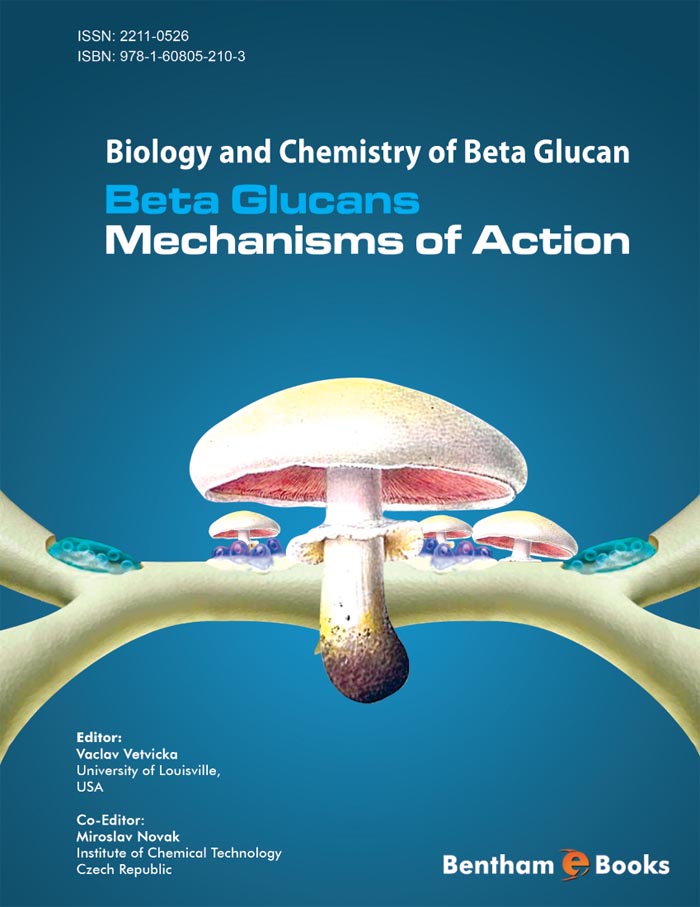Foreword
Fungi and yeasts represent an important natural source of various biologically active compounds, including polysaccharides. Chitins, α- a β-glucans as well as mannans, xylans and galactans are the principal components of fungal cell walls. Among these polysaccharides, some β-glucans demonstrate significant biological activities. These are mainly branched polysaccharides with a backbone made of β-(1→3) linked glucose sequence and side chains linked by β-(1→6) or β-(1→4) bonds. Solubility in water, as well as other physical and biological features of these polysaccharides, depend on their molecular mass, branching degree, and tertiary structure.
Isolation of β-glucans from raw materials (fungal cell walls) frequently requires special intervention to remove other compounds, i.e., proteins, lipids, polyphenols and other polysaccharides, including various extraction/treatment procedures and preparative chromatography. In this context, control of the purity and structural identification of β-glucans are necessary for the quality control of preparations containing these polysaccharides. Modern spectroscopic and separation methods are effective towards these ends.
β-Glucans isolated from various sources—including yeast, fungi and oat—are known as ballast polysaccharides, which are parts of soluble and insoluble dietary fiber. They are indigestible in the small intestine and can be slightly cleaved by some enzymes of human colon microflora. As dietary fiber components, these polysacchartides show some nutritional benefits such as restriction of indigestion problems, positive influence of cholesterol, fat and glucose metabolism. These properties are instrumental in the preparation of health-improving food supplements containing β-glucans. At present, these polysaccharides are mainly known for their antitumor and immunomodulating activities. Moreover, immunity activation by β-glucans increases the resistance of organisms against viral and microbial infections. The immunomodulating effects of these polysaccharides are important as mild and non-aggressive prevention of tumor metastases and in supporting treatment during the course of chemotherapy. Chemical modifications, i.e., carboxymethylation, phosphorylation or sulphation, are commonly used to improve the water solubility and other features of β-glucans.
This book is devoted to various aspects of β-glucans—composition, structure, and isolation approaches—as well as to their numerous biological activities and description of possible mechanisms of action. For polysaccharide specialists, and also for interested people from other scientific fields, the book brings a broad range of up-to-date information together with outlines of possible future prospects.
Andriy Synytsya
Department of Carbohydrate Chemistry and Technology
Institute of Chemical Technology
Prague 6
Czech Republic

